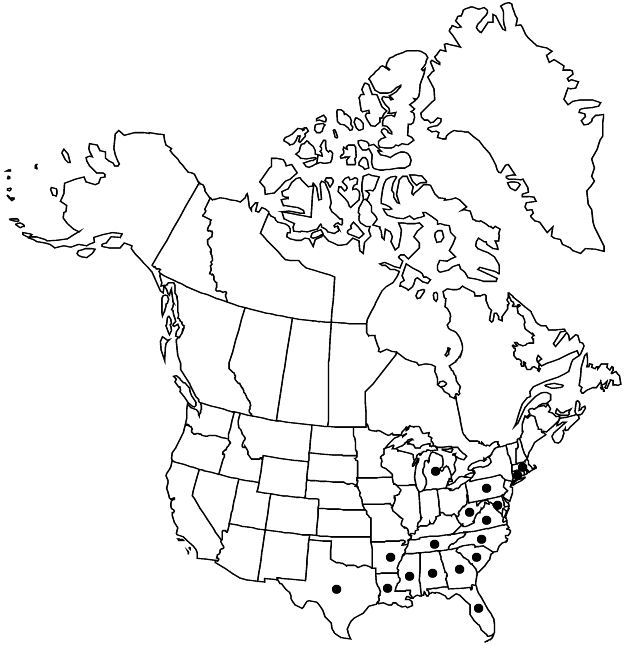Prunus umbellata
Sketch Bot. S. Carolina 1: 541. 1821.
Shrubs or trees, sometimes suckering, 10–60 dm, moderately thorny. Twigs with axillary end buds, usually glabrous, sometimes hairy. Leaves deciduous; petiole 3–14 mm, hairy, usually eglandular, sometimes hairy only adaxially, glandular distally, glands 1–3, discoid; blade usually elliptic to broadly elliptic, sometimes oblanceolate to obovate, 3.5–8 × 1.5–4 cm, base usually cuneate to obtuse, rarely rounded, margins finely, usually singly serrulate, sometimes doubly serrate, teeth sharp, usually eglandular, sometimes glandular, glands blackish, spheric, apex usually acute, sometimes short-acuminate, abaxial surface hairy to glabrate, adaxial glabrous. Inflorescences 2–4(–6)-flowered, umbellate fascicles. Pedicels 5–22 mm, usually glabrous, sometimes hairy. Flowers blooming before or at leaf emergence; hypanthium tubular (often tubular-urceolate when dried), 2–4 mm, glabrous or hairy externally; sepals erect-spreading, ovate-oblong, 1.5–2.5 mm, margins usually entire, sometimes 2-fid at apices, ciliate, abaxial surface hairy or glabrous, adaxial hairy; petals white, sometimes turning pink, obovate to suborbiculate, 3–8 mm; ovaries glabrous. Drupes red, yellow, dark blue, or nearly black, glaucous, globose, 10–15 mm, glabrous; mesocarps fleshy; stones ovoid, slightly to ± flattened.
Phenology: Flowering Feb–May; fruiting Jul–Sep.
Habitat: Sandy pine or oak woods, sandy barrens, shale ridges, limestone bluffs, rocky upland woods, old fields, roadsides
Elevation: 10–800 m
Distribution

Ala., Ark., Conn., Fla., Ga., La., Md., Mass., Mich., Miss., N.C., Pa., S.C., Tenn., Tex., Va., W.Va.
Discussion
Traditionally treated as distinct species, Prunus alleghaniensis from the Appalachians and P. umbellata from southeastern United States are very similar; their ranges overlap in North Carolina and Tennessee. Similar plants disjunct in Michigan have been called P. alleghaniensis var. davisii. Morphological characters (petiole length, shape of blade along with its base and apex, degree of suckering) that have been used to separate these taxa vary as much within each taxon as among them. Since they can be separated only by geographic distribution, they are combined in this treatment.
Some specimens from Connecticut with hairy twigs, petioles, pedicels, and hypanthia were determined as Prunus alleghaniensis by Eames a century ago and do seem to fit within P. umbellata. Other Connecticut specimens determined as P. alleghaniensis (for example, Eames 121, MICH) with scattered glandular teeth on the sepals seem better placed in P. americana. The sole specimen known from Massachusetts (Pease 10,005, NEBC) has singly serrate leaves evenly tapered at both ends as in P. umbellata, but larger petals and reflexed sepals like those of P. americana.
In the southeastern United States, hairy forms have been called Prunus injucunda or P. mitis; the degree of indument on the twigs, petioles, leaf surfaces, pedicels, hypanthia, and sepals is subject to much trivial variation throughout the southeast, the Appalachians, and in Michigan.
Selected References
None.